
Introduction
There's some stiff competition brewing in the heatsink market these days, and as a result of this we've looked at no less than twelve heatsinks in the last few months. It's not going to stop there though, as another five heatsinks have landed in the bit-tech offices this morning - reviews of those heatsinks will follow shortly.Thermaltake has a history for producing some memorable coolers and, as a result of this, has been almost consistently on enthusiasts' radars in some way or another for many years. Today we have a look at two new heatsinks from Thermaltake, the V1 and the MaxOrb, which we first spotted back at this year's CeBit trade show. We've been keen to get the pair in for some time, so now that they're here, let's find out how they perform.
Thermaltake V1
CPU Socket Support: AMD AM2 / 940 / 939 / 754, Intel LGA775Weight (with fan): 637g
Size: 147mm x 92mm x 143mm
UK Price (as reviewed): £30.55 (inc. VAT)
US Price (as reviewed): $53.99 (ex Tax)
The V1 is a newer style in comparison to the more traditional heatsinks from Thermaltake, in that it has a vertical fin array quite like Zalman's old flower coolers. However, the V1 is much larger and has an integrated fan instead of one that clips on the back. So does the redesign of a classic heatsink warrant a revisit to make a successful modern cooler?
Box and Contents
The V1 comes in a one of the biggest CPU cooler boxes we've seen: the clear plastic packaging keeps it securely withheld so it should certainly remain intact during transport and it provides enough box real estate for Thermaltake to include a ton of information about what the cooler is and does.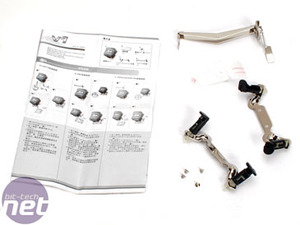 In the box we get an instruction leaflet, LGA775 hold down attachments and screws, an AMD hold down clip and some thermal paste. The manual is clear and simple, although installation is pretty self explanatory. The thermal paste is just cheap silicone stuff that's better than nothing, but it's not resealable so generally only good for a single use.
In the box we get an instruction leaflet, LGA775 hold down attachments and screws, an AMD hold down clip and some thermal paste. The manual is clear and simple, although installation is pretty self explanatory. The thermal paste is just cheap silicone stuff that's better than nothing, but it's not resealable so generally only good for a single use.The cooler is a complete copper affair, apart from the aluminium "cap" on top of the heatpipes but the base underneath is still copper. Four heatpipes are used to duct the heat from the bottom up into the fins either side, with two heatpipes being sent to each.
The cooler comes with a piece of plastic stuck to the base that thankfully doesn't leave a sticky residue when removed as well as protecting it from scratches. But there's no obvious "remove this!" sign, so for those less adept with knowledge may think it's meant to be there. So just in case you didn't know: it's not, and you need to remove it, lest your temperatures suffer greatly.
The 120mm fan in the centre is blue lit with LEDs that unfortunately have no option for turning them off. Thankfully, the effect isn't that in your face, but it isn't overly subtle either. The fan is the same 120mm used with the MaxOrb and has a spin-speed from an extremely quiet (but not silent) 1,300 RPM to a noisy but significantly higher 2,100 RPM.
The fan does come with built in speed management via an included mini-rheostat on a separate cable to the fan plug. Even though it's not really that integrated into the design, it doesn't matter because It means it's not dangling around your case like the in-line Zalman solution. The extra cable can't even get in the way of your fan thanks to the thoughtful routing, and it's even unpluggable if want to hook it up to a separate fan controller.

MSI MPG Velox 100R Chassis Review
October 14 2021 | 15:04

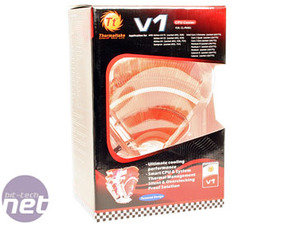
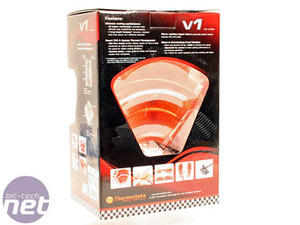
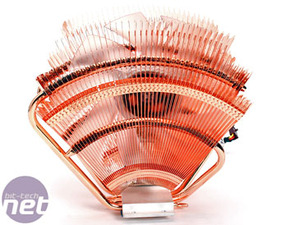
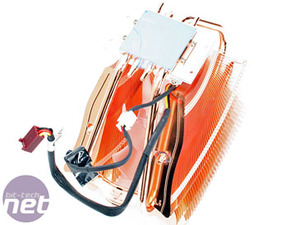







Want to comment? Please log in.